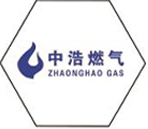
Nov . 27, 2024 16:08
Back to list
Pressure Regulation Skid System for Efficient Flow Management and Safety Optimization
Understanding Pressure Regulating Skids A Comprehensive Overview
In today's rapidly advancing industrial landscape, maintaining efficient and safe control of fluid systems is paramount. Among the various solutions available, pressure regulating skids have emerged as a critical component in managing pressure levels for a wide range of applications in different industries, including oil and gas, chemical processing, and water management. This article aims to provide a comprehensive overview of pressure regulating skids, including their design, functionality, and significance in modern industrial operations.
What is a Pressure Regulating Skid?
A pressure regulating skid is an engineered assembly designed to control and maintain the pressure of fluids in various applications. Typically mounted on a robust frame or base, these skids include several key components such as pressure regulators, valves, gauges, and sometimes control systems that collectively work to ensure the proper regulation of pressure. They are often pre-assembled and completely tested at the manufacturing facility, allowing for quicker installation and deployment in the field.
Key Components of Pressure Regulating Skids
1. Pressure Regulators The heart of the skid, pressure regulators are responsible for reducing the inlet pressure to a preset level. These devices automatically adjust the flow of the fluid, ensuring that the downstream systems operate within the required pressure range.
2. Valves Valves, including control valves and safety valves, help manage the flow of fluid through the system. Control valves ensure precise control over pressure and flow rates, while safety valves provide an essential fail-safe mechanism in case of overpressure situations.
3. Pressure Gauges These instruments are critical for monitoring pressure levels in real-time. Operators can visually inspect gauges to assess system performance and make adjustments if necessary.
4. Control Systems In more advanced skids, automated control systems are integrated to monitor and adjust operational parameters, enhancing precision and efficiency in pressure management.
5. Piping and Fittings The layout and design of the piping system are crucial for minimizing pressure drops and enabling smooth fluid flow throughout the skid.
Design Considerations
When designing a pressure regulating skid, several factors must be considered
- Fluid Characteristics The type of fluid being handled (gas, liquid, or slurry) influences the choice of materials and components. For instance, corrosive fluids demand the use of specialized materials to ensure longevity and safety. - Pressure Requirements Understanding the operational pressure range is vital for selecting appropriate regulators and safety valves.
- Space and Accessibility Skids must be designed to fit within designated areas while allowing sufficient access for maintenance and operation.
pressure regulating skid

- Environmental Conditions Skids may be exposed to various environmental conditions, requiring protection against temperature fluctuations, moisture, and dust
.Applications of Pressure Regulating Skids
Pressure regulating skids are versatile and find applications across numerous sectors
- Oil and Gas Used in upstream and downstream processes, these skids manage the pressure of oil, gas, and related products during transportation and processing, contributing to safety and efficiency.
- Chemical Processing In chemical plants, the accurate control of pressure ensures processes operate within optimal parameters, preventing accidents and enhancing product quality.
- Water Treatment Pressure regulating skids play a vital role in water treatment plants by maintaining the pressure of water as it moves through various treatment stages.
- Power Generation In power plants, these skids regulate steam and gas pressures critical for turbine operation, contributing to overall plant efficiency.
Benefits of Using Pressure Regulating Skids
1. Safety By ensuring that pressure levels remain within safe limits, these skids enhance the safety of operations, reducing the risk of catastrophic failures.
2. Efficiency Optimized pressure regulation leads to better control of processes, improving efficiency and reducing energy consumption.
3. Cost-Effectiveness Pre-assembled skids save time and costs associated with field assembly and commissioning, allowing for faster project completion.
4. Flexibility Pressure regulating skids can be customized to meet specific operational requirements and can be easily integrated into existing systems.
Conclusion
In conclusion, pressure regulating skids are indispensable in modern industrial applications, providing a reliable solution for managing fluid pressure effectively. Their diverse components work in harmony to ensure safe and efficient operation, making them a critical asset in various sectors. As industries continue to evolve with technological advancements, the role of pressure regulating skids in achieving operational excellence will only become more significant. Understanding and implementing these systems appropriately can lead to improved performance, enhanced safety, and cost savings in the long run.
Latest news
-
Safety Valve Spring-Loaded Design Overpressure ProtectionNewsJul.25,2025
-
Precision Voltage Regulator AC5 Accuracy Grade PerformanceNewsJul.25,2025
-
Natural Gas Pressure Regulating Skid Industrial Pipeline ApplicationsNewsJul.25,2025
-
Natural Gas Filter Stainless Steel Mesh Element DesignNewsJul.25,2025
-
Gas Pressure Regulator Valve Direct-Acting Spring-Loaded DesignNewsJul.25,2025
-
Decompression Equipment Multi-Stage Heat Exchange System DesignNewsJul.25,2025

